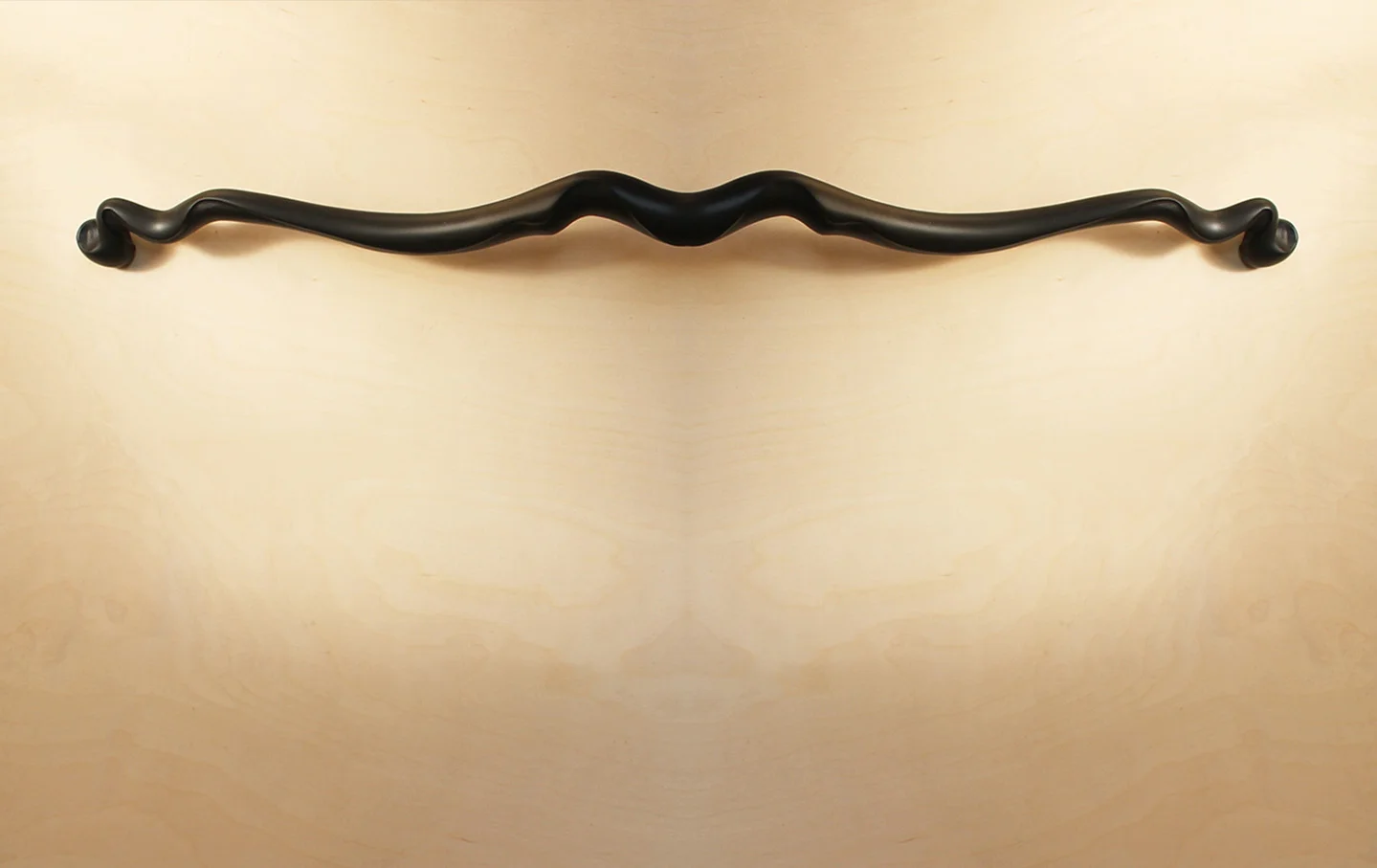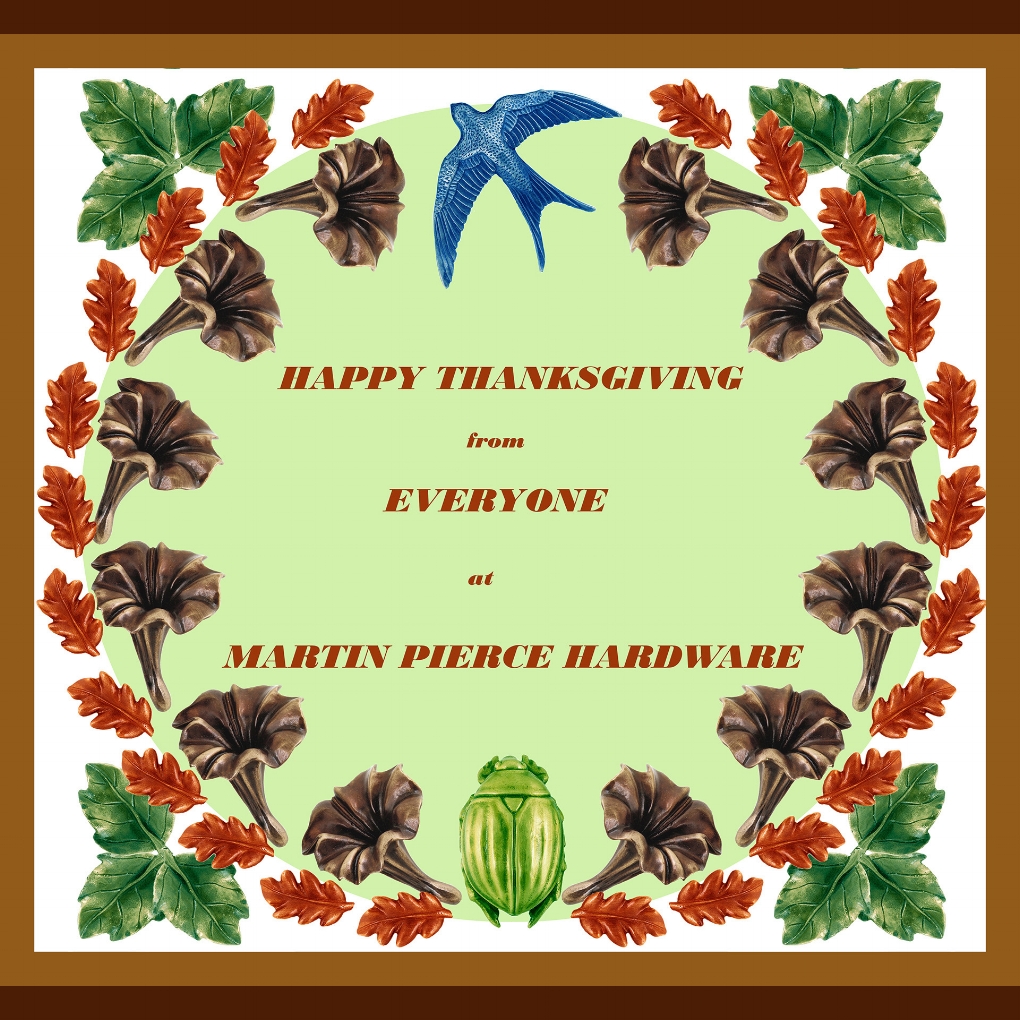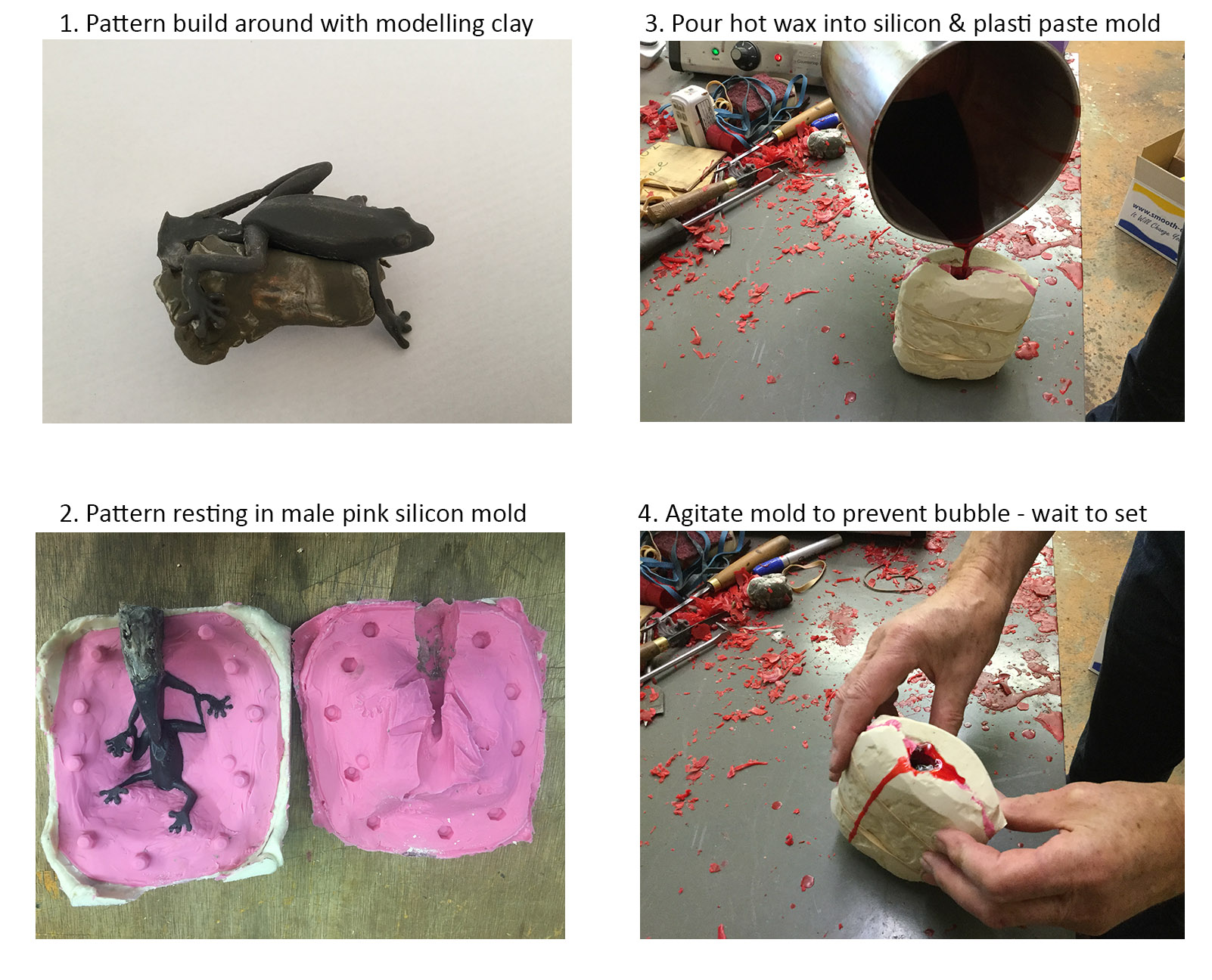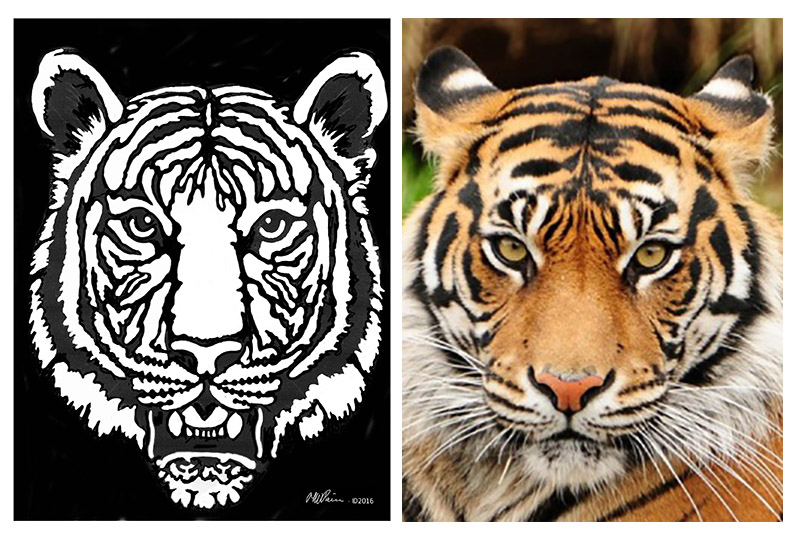The Hedgerow tree handles are made either as large scaled heavily canopied door grips or as smaller door pulls. When they were designed we had planned the larger 19” handle to function as an entry door handle and its smaller cousin as a 9” cabinet door pull.
The different functions impact how the tree is mounted as cabinet pulls are typically mounted through the back of a cabinet with a wood screw that is screwed into the back of the threaded and taped tree. Occasionally the smaller trees are surface mounted as was the case recently when they were mounted on a wall and used as decorative fixtures for curtain ties
The small tree is increasingly been used as door pull for smaller interior doors where its scale is more appropriate or on wood framed glass doors where a lighter handle is preferred. When used as an interior door both sides of the door are seen and so 2 trees (a left and a right) are used. The 2 trees are connected with a custom bolt one end of which is welded to the tree while the other passes through the door into the back of the second tree where it is held in place by 2 discreet Allen screws (set screws)
Through mounting works equally well for larger entry door grips though for added security the welded bolt should be attached to the exterior handle thus preventing its removal by someone equipped with the necessary Allen wrench.




























